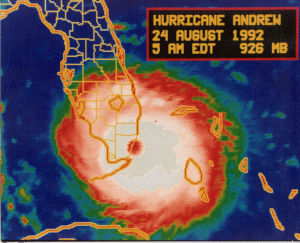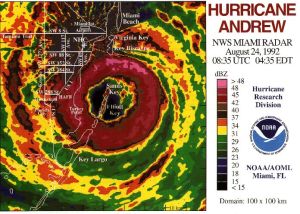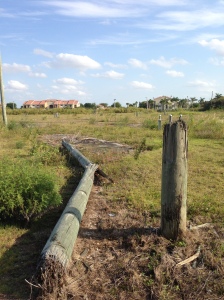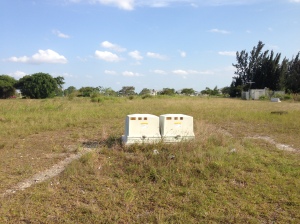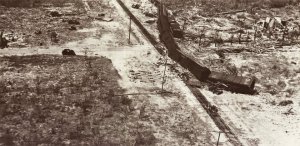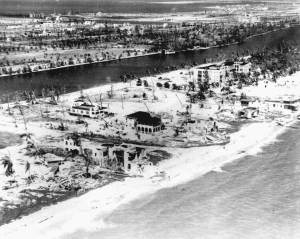Today is the 21st anniversary of one of the most powerful hurricanes to ever strike the US. Considering the fact my parents live in Coral Gables, I have heard many stories about this killer storm. One of the more amazing stories I heard was from a man who was living in Homestead at the time. He described what he called a breach in his home that led to catastrophic failure. The laundry room breached and he quickly got his wife and two kids and rushed them into an interior bathroom. He held onto the door for dear life and even told me a couple of times he thought he wasn't going to be able to hold the door shut any longer, as his entire house was being destroyed. By the grace of God he was able to keep that door shut and when it was all over he walked out with his family to absolutely nothing. The bathroom his family rode the storm out in was the only room left. The rest of his house was scattered down the block! This gentleman is a respected home builder in South Florida, so his home was up to standards. He just took the absolute worst Andrew had to offer...
Hurricane Andrew made landfall just south of Miami, near Homestead AFB, FL, at 5:05am EDT on August 24th, 1992. At the time Andrew was thought to be a strong category-4 hurricane with maximum sustained winds of 145 mph (1-min average). A decade later a reanalysis project by the HRD concluded that Andrew was a category-5 hurricane, with maximum sustained winds at 165mph. Personally, after doing extensive research over the years, I believe Andrew was the second strongest hurricane in recorded history to ever strike the US only behind the 1935 “Labor Day” Hurricane. Remember, it is called the Saffir-Simpson Hurricane Wind Scale, not the Saffir-Simpson Hurricane Pressure/Storm Surge Scale.
Above is the last full sweep of the Miami WSR-57 radar (4:35 a.m. EDT) before the radome, on the roof of the National Hurricane Center, was destroyed. A peak gust of 164 mph was recorded at the NHC before the anemometer was destroyed. Keep in mind the northern rim of the eyewall was actually a few miles south of the NHC's location (Coral Gables).
The highest reported wind gust came from a house in Perrine, FL. Initially reported at 212 mph, this measurement was reduced to 177 mph after a wind-tunnel testing at Clemson University of the same type of anemometer revealed a 16.5% error. Officially, the highest recorded storm surge was observed at 16.9 feet on 184th street (Eureka Dr), which was the former location of the Burger King International Headquarters. Needless to say the damage was incredible! To this day you can still see "scars" from Andrew in Naranja Lakes. Subdivisions vacant, slabs of concrete, snapped telephone poles, with only overgrown land and scattered air conditioner units left. A very eerie sight!
Unlike most hurricanes (storm surge is by far the biggest killer), the majority of Hurricane Andrew's deaths were caused by winds. Half of the deaths directly attributed to the storm occurred in the collapse of frame homes or apartment buildings. Similar to EF-4 tornado damage in many ways. The winds that affected Homestead, Florida City, Leisure City, and Naranja Lakes were at a level few on this earth have ever experienced during a hurricane. Only the handful of survivors left (had the honor of interviewing three of them) from the 1935 "Labor Day" Hurricane have experienced worst in recorded US history.
In the end, as amazing as this sounds, Miami got LUCKY! If Andrew made landfall just 20 miles north, the damage would have been catastrophic for the city. History can be a great predictor of the future, and if you want to study what can happen to the City of Miami during a devastating hurricane, read up on the Great Miami Hurricane of 1926. Pretty much a direct hit from a strong category-4 hurricane. Miami, Miami Beach, Coconut Grove, and Coral Gables were destroyed for the most part. Now take into account the huge population boom just since 1992, the sheer amount of infrastructure/businesses built since 1992, and a 1926 type storm today would be beyond tragic. I would easily guess you would be looking at ~ 250-500 billion in damage with a death toll I don't even want to think about.
*Hurricane Andrew preliminary report plus reanalysis (cat-5 upgrade) for anyone interested: Click Here
*Here is some amazing Hurricane Andrew video from my good friend and fellow hurricane chaser Michael Laca: Click Here
